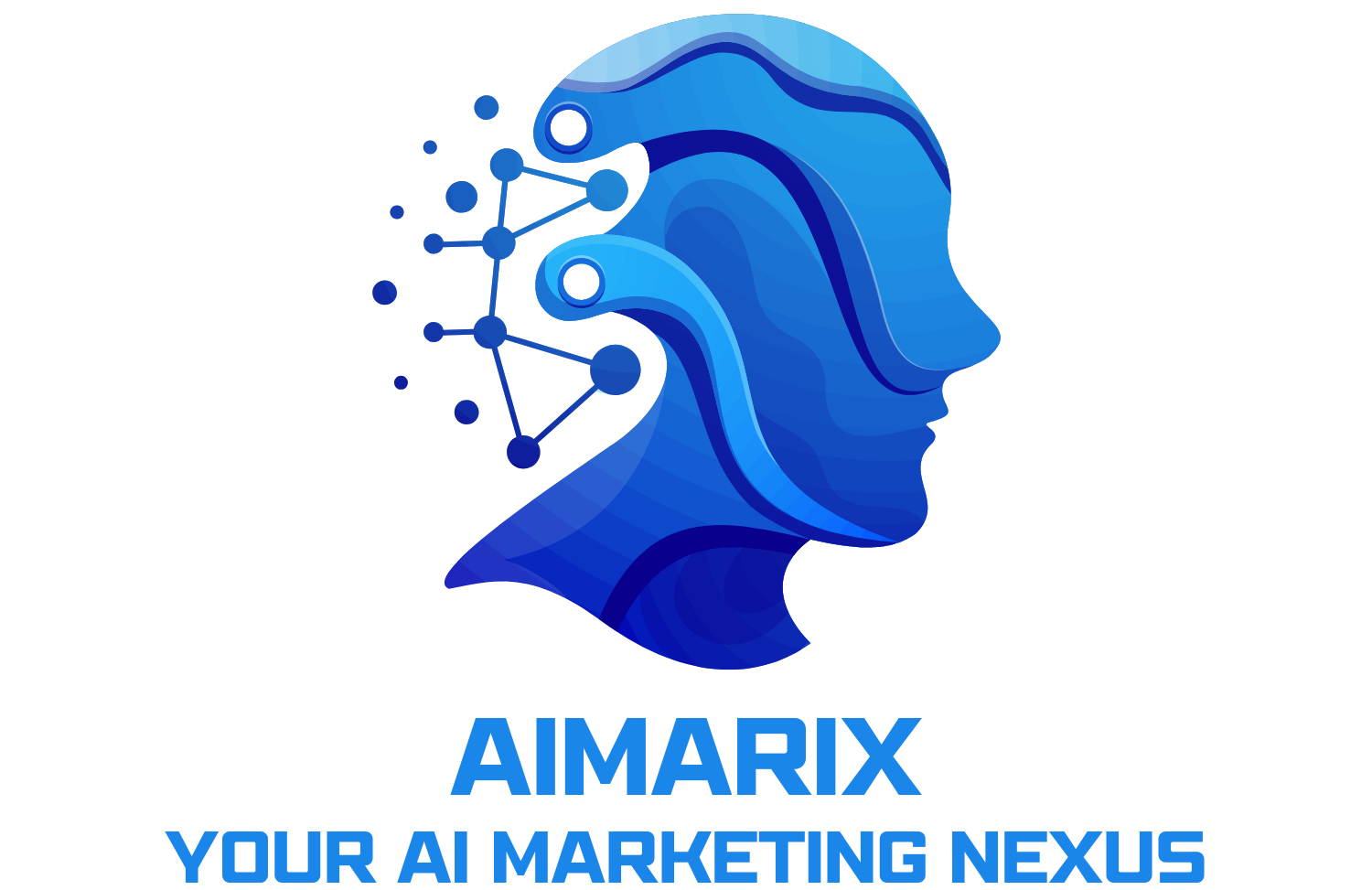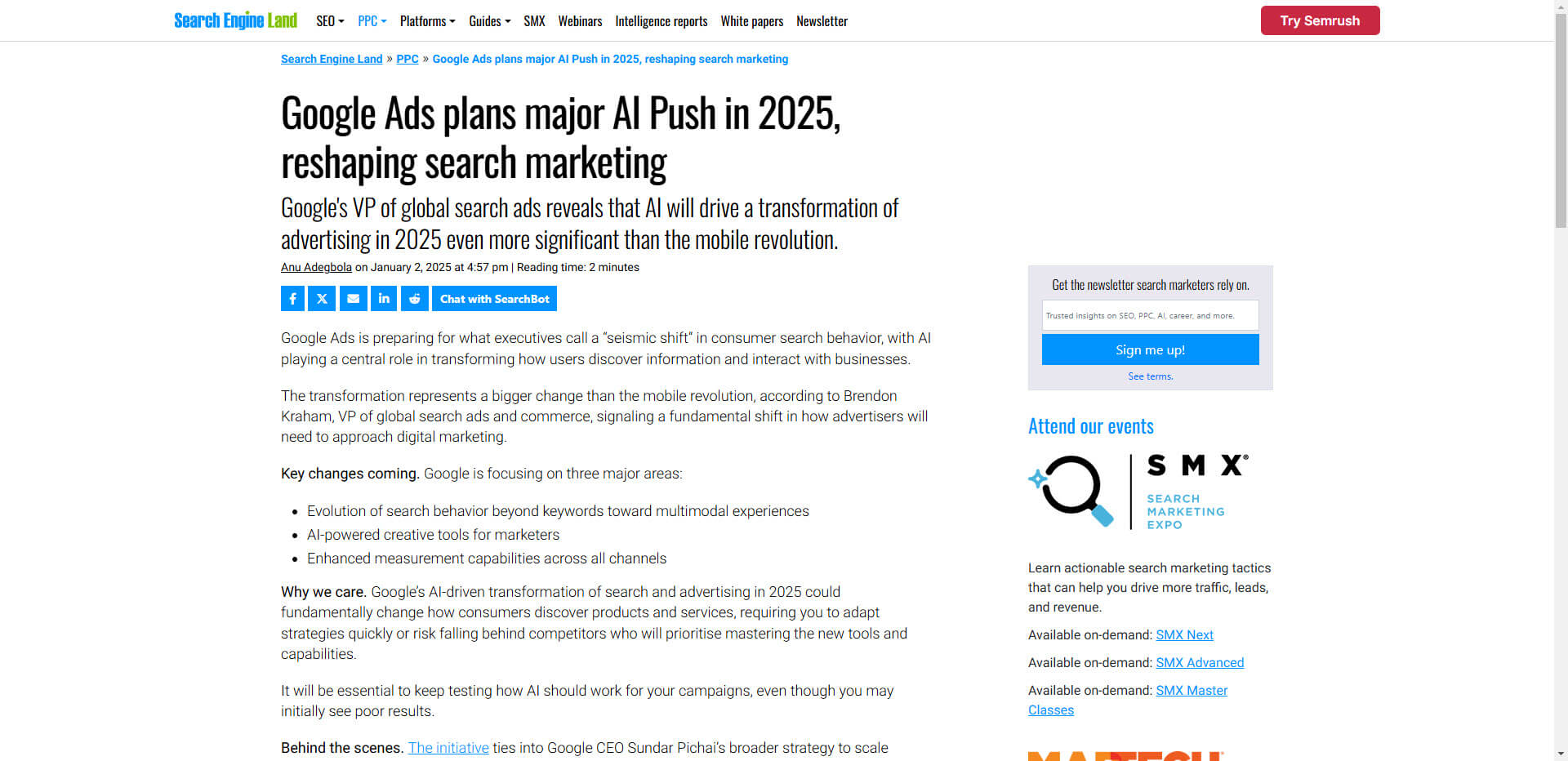The world of search marketing is on the cusp of a massive transformation. According to a recent article by Search Engine Land, Google Ads is gearing up for a significant AI overhaul in 2025, promising to reshape how advertisers connect with their audience. In this blog post, we’ll break down Google Ads’ AI-driven roadmap, explore potential strategies for adapting to these changes, and provide actionable tips for ensuring your campaigns stay effective.
The AI Roadmap: What to Expect
- Predictive Bidding
Google Ads may introduce predictive bidding that anticipates user behavior more accurately. This means the platform could dynamically adjust bids based on high-intent signals like past interactions, browsing history, and real-time context. - Creative Optimization at Scale
AI could play a bigger role in generating and testing ad creatives. Expect new features for dynamically tailored ad copy, visuals, and calls-to-action based on user preferences and historical performance. - Conversational Ad Experiences
With AI powering advanced language models, we may see conversational interfaces for both advertisers and consumers. Think AI-driven chatbots that guide campaign setup or handle queries right from the ad experience. - Streamlined Audience Targeting
Machine learning will likely refine audience segmentation, identifying micro-niches and niche behaviors, helping marketers deliver highly relevant ads at just the right moment.
Why This Matters for Marketers
- Heightened Competition: As more advertisers adopt AI-driven tools, staying ahead requires continuous innovation and strategic thinking.
- Fewer Manual Tasks: Advertisers could spend less time on routine tasks—like bid adjustments or basic copy generation—and more time on strategy and creative insights.
- Emphasis on High-Quality Data: Accurate audience signals and clean data sets will become critical to feed these new AI algorithms.
Preparing Your Campaigns for the AI Shift
- Audit Your Data
Before harnessing the full power of AI, ensure your data is both accurate and comprehensive. Eliminate errors, duplicates, and stale information that could skew AI-driven insights. - Embrace Automation
Begin experimenting with existing Google Ads automation tools, such as Smart Bidding and Responsive Search Ads. Familiarize yourself with their metrics and fine-tune your approach. - Invest in Creative Experimentation
Since the future of AI in Google Ads may include automated creative testing, start now. Develop multiple ad variations and track user engagement to understand what resonates most with your audience. - Stay Educated
Keep tabs on Google’s AI announcements through official channels, industry blogs, and thought leaders. Regularly attend webinars or marketing conferences to maintain a competitive edge.
Potential Pitfalls
- Overreliance on AI: Automation doesn’t replace strategic thinking. Balance AI-driven insights with human creativity and market knowledge.
- Data Privacy Concerns: As AI collects more user data, marketers should be mindful of privacy regulations and user trust.
- Skill Gaps: Traditional PPC skills might not fully equip your team for AI-based tools, so consider investing in training and development.
The Google Ads AI push in 2025 promises to revolutionize search marketing, opening doors to more personalized, efficient, and innovative campaign strategies. Marketers who proactively adapt—by auditing data, adopting automation, and investing in continuous learning—will be best positioned to thrive in this new era.
Ready to future-proof your campaigns? Keep one eye on Google’s developments and the other on emerging AI trends to stay a step ahead in an ever-evolving digital advertising landscape.
Source: Search Engine Land

